As Seen on SensiMag.com
“As seen on SensiMag.com” …
has a nice ring to it, eh? We love being written about and we're excited to start 2021 by sharing the link to a new story in Sensi Magazine about the Happy Travelers Tours High Tea Experience.
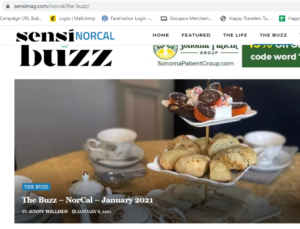 The High Tea Experience brings a CBD-infused British-style Tea Service to your location in the Sonoma or Napa Valley as well as the Greater Bay Area. Enjoy CBD-infused Tea, Finger Sandwiches, Scones and Desserts all in the comfort of your location.
The High Tea Experience brings a CBD-infused British-style Tea Service to your location in the Sonoma or Napa Valley as well as the Greater Bay Area. Enjoy CBD-infused Tea, Finger Sandwiches, Scones and Desserts all in the comfort of your location.
For more information, email [email protected]
https://sensimag.com/norcal/the-buzz-norcal-january-2021/
If you want to read more of our Media Coverage check out the interview on Ganjaprenuer.com or the write up on Forbes!
Book your High Tea Experience or other Happy Travelers Tours Cannabis Adventure Today!
Cannabis Terroir and Appellations
Cannabis Terroir and Appellations are as important to the cannabis industry as they are to viticulture. When growing outdoor, sun-grown cannabis, terroir is key and appellation is the edge.
From Wiki
Terroir is a French term used to describe the environmental factors that affect a crop's phenotype, including unique environment contexts, farming practices and a crop's specific growth habitat. Collectively, these contextual characteristics are said to have a character; terroir also refers to this character.
Some artisanal crops for which terroir is studied include wine, cider, coffee, tobacco, chocolate, chili peppers, hops, agave (for making tequila and mezcal), tomatoes, heritage wheat, maple syrup, tea, and cannabis.
Cannabis Terroir defined by the Cannabis Horticultural Association (CHA)
“...[T]he set of special characteristics that the geography, geology and climate of a certain place, interacting with the plant's genetics, express in terpene profile and cannabinoid percentages....that is cannabis terroir.”
Cannabis Appellations
One group in the Sonoma Valley which is working on the Cannabis Appellations project with the State of California is the Sonoma Valley Cannabis Enthusiasts a non-profit based committed to promoting Sonoma Valley’s distinctive and unique cannabis.
State of California Cannabis Appellations Program
From the State of California’s website: An appellation of origin is a protected designation that identifies the geographical origin of a product and how that product was produced. CDFA’s Cannabis Appellations Program will promote regional cannabis goods and local businesses, prevent the misrepresentation of a cannabis good’s origin, and support consumer confidence about a cannabis good’s origin and characteristics.
How Do Terroir and Appellations Intersect?
The idea is simple: the unique soil and environment conditions which exist in a cannabis growing region create cannabis varietals which are unique to those conditions. When an Appellation is associated to that same cannabis growing region, then, Craft and Artisanal Cannabis Grows can label their products as grown in that Appellation (think Emerald Triangle or Sonoma Valley)
As cannabis consumers become more sophisticated about how their cannabis is grown and produced, they’ll begin to pay more attention to the Appellation where the cannabis is grown (especially sun grown flower versus indoor grown).
The ability for craft growers to differentiate via appellations is a significant marketing advantage, just like it is for wine makers and vineyards.
MountainTop Grow Tour
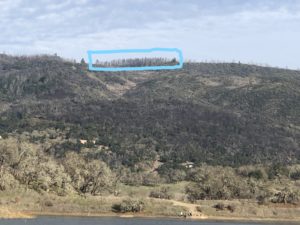 The Happy Travelers Tours MountainTop Grow Tour takes Guests up to the 2,700 feet about sea level summit of a local Sonoma Valley mountain to view 3 acres of cannabis.
The Happy Travelers Tours MountainTop Grow Tour takes Guests up to the 2,700 feet about sea level summit of a local Sonoma Valley mountain to view 3 acres of cannabis.
In addition to viewing the largest permitted outdoor grow in Sonoma County, we’ll take in the amazing views from the Mountain Top!
Learn More About Cannabis and Terroir
Join Happy Travelers Tours on our MountainTop Grow Tour (aka Wine-and-Weed Tour) and learn all about cannabis terroir while getting up-close-and-personal with 1,200 cannabis plants!
Book your Tour today, email [email protected] or call 707-386-9859
Cannabis Farming
Cannabis farming is complex, challenging and rewarding; however, the first thing is terraforming, also known as, preparing the grow site.
What is Terraforming
Terraforming or terraformation (literally, "Earth-shaping") is the hypothetical process of deliberately modifying the atmosphere, temperature, surface topography or ecology of a planet, moon, or other body to be similar to the environment of Earth to make it habitable by Earth-like life.
In this case, we are referring to transforming the grow site from a tree-stump and rock-strewn field into a grow site suitable for cannabis farming.
Is Higher Better?
Happy Travelers Tours grow site is located near the summit of a local mountain in the Sonoma Valley and is situated at 2,700 feet above sea level. The question of being ‘higher’ gets to these factors:
- Quality of sunlight
- Not only is the sunshine above all the haze which fills the Valley, it shines on our grow site all day long, provide the cannabis plans with a full day’s worth of sunlight during the grow season (late April through October)
- Above the Fog and Haze
- Since the site is 2,700 feet up the mountain, it’s above the fog and haze which fill the Valley during the Summer months. This means better seasonal sunlight more consistently through the grow season
What does it all Mean?
For cannabis farming, it’s all about the ‘micro-climate’ and ‘terrior’ of the grow site. The more sunshine and the healthier the soil the better for cannabis farming.
Take a Happy Travelers Tour
Come join Happy Travelers Tours as we explore our MountainTop Grow on our “Wine-and-Weed” Tour this year! We will put you up-close-and-personal with cannabis plants, provide an educational experience and have some fun with Cannabis Farming!
Cannabis Tourism
Cannabis Tourism. It's more than just for aging hippies or millennials, it's THE next big thing, at least according to a Survey conducted in March 2020 by MMBY Global Travel Intelligence (MMBY) and distributed by the California Cannabis Tourism Association (CCTA).
Methodology
According to MMGY, this was the first-ever comprehensive national survey of U.S. leisure travelers' understanding and interest in recreational cannabis-related products, experiences and services when on vacation.
A random sample of 1,501 respondents representing the U.S. population (defined below) participated in this online survey between March 3 - 10, 2020. Respondents were screened:
- 21 years of age or older
- Annual household income of at least $50,000
- Active overnight leisure travelers (have taken at least one overnight domestic trip for leisure purposes in the past 12 months)
- Interested in participating in at least one cannabis-related activity while on vacation (see table)
| Survey Methodology: 1,501 respondents via online survey 3/3 - 3/10 2020 | > 21 years of age or older >Annual household income of at least $50,000 | >Active Overnight leisure travelers (with at least one domestic trip in last 12 months) > Interested in participating in a Cannabis Activity |
|---|---|---|
| 1) Visit a Cannabis Dispensary or Retail Store | 2) A spa treatment with CBD Products: CBD massage oil, CBD face mask and so on | 3) Tour a cannabis farm or greenhouse to learn about cannabis appellations, craft and cannabis varietals |
| 4) A stay in cannabis-friendly lodgings | 5) Visit a cannabis lounge or cafe where smoking or vaping cannabis is permitted legally | 6) Try a CBD- or THC-infused beverage: tea, coffee, sparkling water and so on |
| 7) Try a CBD- or THC-infused edible (gummies, brownies, chocolates and so on) | 8) Partake in a guided sampling or pairing of different varietals of cannabis with a cannabis sommelier | 9) Smoke different varietals of cannabis |
| 10) Participate in a dining experience pairing food with cannabis | 11) Attend a cannabis festival or cannabis-focused event | 12) Try a specific brand of cannabis |
| 13) Travel around city in a cannabis party bus | 14) Plan to try some cannabis products that the Tourist has researched in advance | 15) Sample some cannabis in a safe environment |
Happy Travelers Tours Fill the Bill
Little did we realize when we were building the Happy Travelers Tours Experiences menu that we would be able to meet most, if not all, of these Canna-Tourists Wish List items!
Happy Travelers Tours Experiences include:
- Mountain Top Wine-and-Weed Farm Tour satisfies Cannabis Tour wish list activities: 3, 6, 7, 8, 9, 10, 11, 13 and 15
- Sip-and-Sniff Sunset Tour, which satisfies Cannabis Tour Activities: 6, 7, 8, 9, 10, 13 and 15
- Cannabis Dispensary Tour meets these Cannabis Tour list activities: 1, 5, 6, 7, 8, 9, 12, 13, 14, 15
- Cannabis Dispensary and Winery Tour covers these Cannabis Tour wish list choices: 1, 5, 6, 7, 8, 9, 12, 13, 14, 15
- Happy Travelers Tours High Tea Experience is an excellent choice for these Cannabis Tour choices: 6, 7, 8, 10, 11
- Cannabis Overnight Adventures (made to order): 2, 4, 6, 7, 8, 9, 10, 11, 12, 15
Get the Ultimate Cannabis Vacation Guide
 If you're planning a Cannabis Vacation, download your copy of the "Ultimate Cannabis Vacation Guide" from Happy Travelers! It's Free!
If you're planning a Cannabis Vacation, download your copy of the "Ultimate Cannabis Vacation Guide" from Happy Travelers! It's Free!
What's Next for Cannabis Tourism
Happy Travelers Tours Experiences are the Best Way to fulfill your Cannabis Tourism adventure. Book a Tour Today, call 707-386-9859 or email with questions and we will get you up-close-and-personal with Cannabis!
Exciting Update for 2021
The Mountain Top Wine-and-Weed Farm Tour will have a birds-eye view of a 3 acre cannabis grow starting on April 20, 2021.
Growing Weed
Growing Weed. It’s the whole point of Happy Travelers Tours and our MountainTop Grow Tour (aka: the Wine-and-Weed tour). So, what is the big deal about growing weed?
Growing Weed
While it seems like a straight-forward proposition, and, in fact, you can just throw a seed into a pot, have it germinate and then transplant it. Give it sun and water and, viola, your plant will grow and it might even produce some decent flowers in the end.
However, like most things, the more you put into it, the more you’ll get out of it. Think of it this way: you can learn to strum some chords on guitar and even play some songs BUT if you put in the time, you can end up with serious skills which bring delight to your friends.
Same thing with the process of growing weed.
Growing Weed Outdoors
The easiest way to get involved with growing cannabis is to start with an outdoor plant or two (check your local jurisdictions for local rules). If you can, get your first plants from either someone you know or a licensed nursery or wholesaler and plant those where they get full sun every day.
To this end, a southern exposure, with full day-long sunlight is the best. If you can’t grow outdoors, then you’ll have to consider growing indoors and that means a lot of work, starting with lights. There is a lot to talk about when discussing growing weed outdoors step by step and finding a local farmer or mentor is a great way to start growing weed.
Best Nutrients for Growing Outdoors
This will depend on a lot of factors which are unique to where you’re going to be growing. To compare it to a vineyard for a moment, the same soil and environmental issues which exist for a vineyard (terrior, microclimate) are the exact same issues for growing outdoors. And, if you’ve never grown in a specific outdoor location before, you have to do some research about:
- Local Soil and Amended Soil
- Ph Level of the Water
- Local Pests, including Spider Mites
- Which Nutrients other Local Farmers Use
Best Lights for Growing Weed Indoors
There are lots of options for indoor lights, including state-of-the-art LED systems which mimic the Sun’s light wave spectrum as it moves from May to October. Read this article for more information about Growing Cannabis Indoors. One of the best ways to learn how about growing weed plants indoors is to work with someone who has an existing operation.
Remember, the main challenge with indoor cannabis production is creating the outdoor environment which the plants love, inside.
Light Stages for Growing Weed
There are three stages of growing weed indoors which are controlled by how much light the plants get:
- Vegging – where the lights are on more than 18 to 20 hours per day
- Flowering – where the lights run 12 hours on and 12 hours off
- Drying and Curing – where there are no lights
Growing Cannabis in a Greenhouse
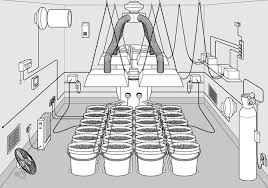 There are several types of greenhouses, from state-of-the-art glass houses which has features you can control via a phone app (e.g., open/close windows, turn on/off water, turn on/off lights and so on) to simple, Hoop Style Greenhouses which you put together in your backyard.
There are several types of greenhouses, from state-of-the-art glass houses which has features you can control via a phone app (e.g., open/close windows, turn on/off water, turn on/off lights and so on) to simple, Hoop Style Greenhouses which you put together in your backyard.
It all depends on your budget, time and resources.
Growing Marijuana from Seed
If you can germinate your starters from seed, you will most likely have heartier and sturdier mature plants than if you start with clones. However, there’s more work to do when you start with seeds, including sexing the plants and ensuring the seed stock you’re working with is from a stable genetic and not just a random seed you found in the bag from your last cannabis purchase.
Growing weed with seeds is very satisfying and it’s best if you have some knowledge, or the help from someone who has been successful growing from seeds either indoor, outdoor or in a greenhouse grow.
Does Growing Weed Smell
Yes. In fact, in many jurisdictions in California, you have to have an “odor mitigation” plan around your facility to help contain the smell. The growing weed smell is an industry issue and something to consider, especially with outdoor operations.
Conclusion
Growing weed can be very simple or very complicated, depending on your level of interest and available time!
To learn more (or all about growing weed) Book a Happy Travelers Tours and join our MountainTop Grow Tour and get up-close-and-personal with over 1,200 cannabis plants!
Travel During COVID Times
Travel during COVID times can be done, however, you must be very aware of your surroundings to stay COVID safe. If you must travel during COVID times, please review this post for tips to stay safe!
Before you travel
As you think about making travel plans, consider these questions:
- Is COVID-19 spreading at your destination?
- Are you at increased risk for severe illness?
- Do you live with someone who's at increased risk for severe illness?
Be Careful
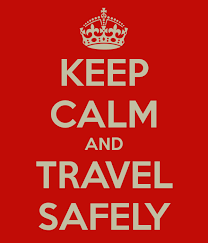 The Centers for Disease Control and Prevention (CDC) recommends following these steps to protect yourself and others when you travel:
The Centers for Disease Control and Prevention (CDC) recommends following these steps to protect yourself and others when you travel:
- Maintain a distance of 6 feet (2 meters) between you and others as much as possible.
- Avoid contact with anyone who is sick
- Limit contact with frequently touched surfaces, such as handrails, elevator buttons and kiosks. If you must touch these surfaces, use hand sanitizer or wash your hands afterward.
- Wear a cloth face mask.
- Avoid touching your eyes, nose and mouth.
- Cover coughs and sneezes.
- Clean your hands often. It's especially important after going to the bathroom, before eating, and after coughing, sneezing or blowing your nose.
- Wash your hands often with soap and water for at least 20 seconds.
- If soap and water aren't available, use a hand sanitizer that contains at least 60% alcohol. Cover all surfaces of your hands and rub your hands together until they feel dry
Make Sure You’re Traveling to a Safe State
| STATE | COVID TRAVEL RESTRICTIONS - as of 11/3/2020 |
|---|---|
| Alaska | -- Submit a travel declaration and self-isolation plan online and arrive with proof of a negative Covid-19 test. -- Follow a plan that your employer filed with the state if you come for work. -- Buy a $250 Covid-19 test when you arrive and self-quarantine at your own expense until you get the results. |
| Arizona | As of November 3, there were no statewide travel restrictions in Arizona |
| Arkansas | As of November 3, there were no statewide travel restrictions in Arkansas |
| California | As of November 3, there were no statewide travel restrictions in California |
| Colorado | As of November 3, there were no statewide travel restrictions in Colorado |
| Connecticut | Any traveler coming from a state that has a positiitye rate of 10 out of 100,000 people or a 10% or higher positivity rate must self-quarantine for 14 days. The traveler must have spent more than 24 hours in said state for the rule to apply. Everyone also needs to complete a travel health form. |
| Delaware | As of November 3, there were no statewide travel restrictions in Delaware |
| Florida | As of November 3, there were no statewide travel restrictions in Florida |
| Georgia | As of November 3, there were no statewide travel restrictions in Georgia |
| Hawaii | Travelers who arrive with an FDA-approved nucleic acid amplification test (NAAT) taken no earlier than 72 hours before their flight, performed using a nasal swab, and can show proof of negative test results from a CLIA certified laboratory can avoid the state's 14-day quarantine. This includes anyone 5 or older |
| Idaho | In Ada County, which includes Boise, travelers coming from outside Idaho are "encouraged" to quarantine for 14 days. |
| Illinois | There are no statewide restrictions, but a 14-day quarantine is required for visitors heading to Chicago from many US state. The list of states on the quarantine list is updated each Tuesday and goes into effect each Friday. |
| Indiana | As of November 3, there were no statewide travel restrictions in Indiana |
| Iowa | As of November 3, there were no statewide travel restrictions in Iowa |
| Kansas | While mostly open, Kansas has some very specific 14-day quarantine requirements that often change. |
| Kentucky | Visitors from states with a coronavirus testing positivity rate of 15% or more on Johns Hopkins University's website should quarantine for 14 days. |
| Louisiana | As of November 3, there were no statewide travel restrictions in Louisiana |
| Maine | Travelers must quarantine for 14 days upon arrival or sign a form stating they've received a negative Covid-19 test within 72 hours. You may also get tested upon arriving in Maine but must quarantine while awaiting results. Residents of Massachusetts, New Hampshire and Vermont are exempt from quarantining or having a negative test. |
| Maryland | As of November 3, there were no statewide travel restrictions in Maryland |
| Massachusetts | All visitors and residents must complete a travel form before arriving in Massachusetts unless they are arriving from a state designated by the Department of Public Health as low risk. As of November 3, those were California, Connecticut, Maine, New Hampshire, New York, Vermont, Washington state and Washington, DC. Travelers must "quarantine for 14 days or produce a negative Covid-19 test result that has been administered up to 72 hours prior to your arrival in Massachusetts." Those waiting on test results need to quarantine until they receive their negative results |
| Michigan | As of November 3, there were no statewide travel restrictions in Michigan |
| Minnesota | As of November 3, there were no statewide travel restrictions in Minnesota |
| Mississippi | As of November 3, there were no statewide travel restrictions in Mississippi |
| Missouri | As of November 3, there were no statewide travel restrictions in Missouri |
| Montana | As of November 3, there were no statewide travel restrictions in Montana |
| Nebraska | As of November 3, there were no statewide travel restrictions in Nebraska |
| Nevada | As of November 3, there were no statewide travel restrictions in Nevada |
| New Hampshire | Those traveling from outside other New England states (Maine, Vermont, Massachusetts, Connecticut and Rhode Island) who are visiting for "an extended period of time" are asked to self-quarantine for two weeks |
| New Jersey | All travelers to New Jersey from states that have a Covid-19 testing positivity rate of 10% or higher or have 10 people test positive for every 100,000 residents is asked to quarantine for 14 days. This rule does not apply for visitors spending less than 24 hours in the state. |
| New Mexico | People traveling from out-of-state are required to self-quarantine for 14 days or the length of their stay in New Mexico, whichever is shorter. The state issues a weekly list of exemptions, updated each Wednesday. |
| New York | Gov. Andrew M. Cuomo has announced new guidelines allowing out-of-state travelers to New York to "test out" of the mandatory 14-day quarantine. Travelers from states that are contiguous with New York will continue to be exempt from the travel advisory. Covered travelers must continue to fill out the Traveler Health Form. |
| North Carolina | As of November 3, there were no statewide travel restrictions in North Carolina |
| North Dakota | As of October 19, there were no statewide travel restrictions in North Dakota. Be aware that on November 3, North Dakota had the highest number of Covid-19 cases per 100,000 people in the country. |
| Ohio | Travelers visiting Ohio from states reporting positive testing rates of 15% or more must self-quarantine for 14 days. |
| Oklahoma | As of November 3, there were no statewide travel restrictions in Oklahoma |
| Oregon | As of November 3, there were no statewide travel restrictions in Oregon |
| Pennsylvania | Visitors traveling from states with "high amounts of Covid-19 cases" are asked to quarantine for 14 days. |
| Rhode Island | Those traveling to Rhode Island from a state that has a positive testing rate of 5% or more must quarantine for 14 days. Travelers can opt out of the quarantine if they can provide proof of a negative Covid-19 test taken within 72 hours of their arrival |
| South Carolina | As of November 3, there were no statewide travel restrictions in South Carolina |
| South Dakota | As of November 3, there were no statewide travel restrictions in South Dakota |
| Tennessee | As of November 3, there were no statewide travel restrictions in Tennessee |
| Texas | As of November 3, there were no statewide travel restrictions in Texas. The state urges people to wear a mask, saying "an itty-bitty piece of cloth goes a long way towards keeping yourself and others healthy." |
| Utah | As of November 3, there were no statewide travel restrictions in Utah |
| Vermont | Most travelers visiting Vermont must quarantine for 14 days upon arrival. Any traveler arriving in a personal vehicle from counties in New England, Mid-Atlantic states, Ohio and West Virginia that have less than 400 active cases of coronavirus per million people does not need to quarantine upon arrival. The information is updated each Friday. |
| Virgina | As of November 3, there were no statewide travel restrictions in Virginia |
| Washington D.C. | Visitors traveling to or from a high-risk state must self-quarantine for 14 days. The restrictions exclude Virginia and Maryland. |
| Washington | As of November 3, there were no statewide travel restrictions in Washington |
| West Virginia | As of November 3, there were no statewide travel restrictions in West Virginia |
| Wisconsin | There is no statewide quarantine mandate, but all visitors coming from elsewhere to Wisconsin are being asked to stay home as much as possible for 14 days upon arrival while checking for Covid-19 symptoms. |
| Wyoming | As of November 3, there were no statewide travel restrictions in Wyoming |
Be Smart
Take a trip that is direct and door-to-door if possible; avoid a lot of different means of transportation or transfers. For example, traveling by car during COVID-19 will likely be the safest, so look for destinations within driving distance. Get on a plane only if you need to visit family or if it’s an emergency. If you must fly, keep in mind that a nonstop flight is safer than one with layovers, because of fewer chances of being exposed to the virus. Another advantage of taking a car is that after you reach your destination you can use it on local excursions. Regardless, choose local activities that do not require public transportation, and opt for walks and bike rides.
Be Cautious
- Choose an off-peak time to travel. Don’t leave on a Friday, when public rest stops will be more crowded.
- Bring your own drinks and snacks to avoid standing in line.
- Wear a mask when you are close to others.
- Keep wipes and hand sanitizers on you at all times.
Now What?
Happy Travelers Tours is here to support your travel plans to Wine-and-Weed Country. Review our COVID-19 Protocols and then Book a Happy Travelers Tours Cannabis Adventure!
Sonoma County Ultimate Bachelorette Party Planning Guide
Sonoma County Ultimate Bachelorette Party Planning Guide
Introduction
There’s more than just Wine in Sonoma County. In fact, we now offer the most unique Bachelorette Party you'll ever have, our CBD-infused British-style High Tea Experience! Read More about it below!
Sonoma County is more than just the number one spot for World Class Wine, it’s home to a bounty of food choices (from Vegan to Traditional), beverages (Wineries, Breweries, Distilleries and more), activities (Sightseeing, Hiking/Nature Preserves, Attractions) and, of course, Shopping!
From Antiquing to Boutiquing, from renovated Shopping Districts to Day Spas, Sonoma County has got it all. And, did we mention Cannabis? Dispensaries, Indoor and Outdoor Grows and Cannabis Production thrive in Sonoma County and your Ultimate Bachelorette Party can include Tours and Tastings!
We are Sonoma County natives and in Section One we share insights into what makes Sonoma County the place for your Ultimate Bachelorette Party. In Section Two we provide a sample Three Day Itinerary to inspire your Ultimate Bachelorette Party.
Section One: Things to Consider
When planning your Sonoma County Ultimate Bachelorette Party there are several things to consider.
There’s more to Wine Country than Wine:
-
Food and Restaurants
From world-famous dinner spots like John Ash (Santa Rosa) or The Girl and the Fig (Sonoma), to local gems like Lilly Kai (Petaluma) or Della Santinas (Sonoma), it’s all here and easy to get to!
For Causal dining there are wonderful bakeries and diners to consider for breakfast treats or a memorable lunch. Consider Sweet Pea Bakery in the City of Sonoma for breakfast or lunch, or, if you’re on the famous Sonoma Plaza, try the Sunflower Café or La Basque Boulangerie and sit outside to watch life on the Square!
-
Day Spas
Whether it’s a nature-centric adventure to Osmosis or part of a recreational shopping experience at Montgomery Village’s MeSpa, Sonoma County hosts some of the highest rated Day Spas in California.
Get your mud-bath/massage or group mani/pedi thing on! Ask your concierge if your hotel offers any group discounts!
-
Boudoir Photos
It doesn’t matter if you’re the Bride-to-Be, the BFF or the Groom’s Mom, a Boudoir Photo session creates lasting memories for everyone. Just think about the surprise of a lifetime for the Groom (you know what we mean)!
Some boudoir photographers will shoot outdoors, taking advantage of the Sonoma County landscape; a quick Google search will get you what you need!
-
Novelty Fun
As we mentioned at the beginning, there’s more to Wine Country than Wine and here’s a list of a few things we like to call Novelty Fun!
First up, have you ever had fresh, hand-made, Mexican Ice Cream? We’re guessing you haven’t, but, you can enjoy some at La Michoacana Ice Cream right outside of the City of Sonoma, in what’s called “The Springs”. Get a scoop, grab a seat on one of the benches outside and take in the culture of The Springs!
Before (or After) you visit La Michoacana, stroll down to the Sonoma Family Fun Center in the Maxwell Village Shopping Center and challenge your ‘I Do Crew’ to a round of Miniature Golf (you can go toast the winner down the street at La Roche Family Vineyards outdoor tasting patio when you’re done!)
If you’re up for something new and different, try a Cannabis Dispensary Tour with Happy Travelers Tours. Pickup is available throughout Sonoma County and the Tour visits three unique Dispensaries, one with an Indoor Grow. In addition, there’s an opportunity to consume what you purchase before enjoying a family style Mexican meal.
-
Wine Tasting
Of course, it’s almost impossible to visit Sonoma County’s Wine Country without spending some time tasting wine; our recommendation is to Book a Tour with Old Vine Wine Tours and let our sister company's Team take you to the very best wineries Sonoma County offers.
-
Weed Tasting
If the Cannabis Dispensary Tour interested you, then, we present the MountainTop Wine and Weed Tour from Happy Travelers Tours. This unique and one-of-a-kind experience will put you and your Gal Pals up-close-and-personal with cannabis plants.
Get educated about cannabis cultivation with the grow team, enjoy a personal bud-tender retail experience with our retail partner. A catered lunch is provided along with several Bachelorette Party exclusive add-ons!
Get high up on the mountaintop and create memories which will last a lifetime with a Happy Travelers Tours Bachelorette Party experience!
-
The Happy Travelers Tours High Tea Experience
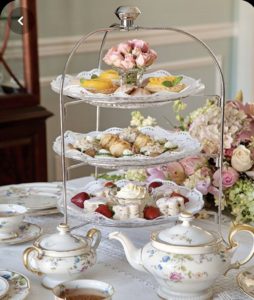 What could be more fun than sitting down to a High Tea with your Bridal Party? What if the Tea and Treats are infused with CBD? Now, that’s what we call a ‘High’ Tea! For groups of 4 or more, the High Tea Experience features:
What could be more fun than sitting down to a High Tea with your Bridal Party? What if the Tea and Treats are infused with CBD? Now, that’s what we call a ‘High’ Tea! For groups of 4 or more, the High Tea Experience features:
- Three Courses of CBD-infused Teas
- Treat Towers filled with both CBD-infused and non-infused:
- Sandwiches
- Breads and Scones
- Desserts
Read more here at The High Tea Experience!
-
Sonoma County Sights
Sometimes, sitting back and letting the world flow by the window is the very best thing to do and, when you’re in Wine and Weed Country this couldn’t be more true!
Take a day trip with Elite Excursions or Happy Travelers Tours. Visit the Sonoma Coast and enjoy Happy Travelers Tours “Sip-and-Sniff” experience while watching the sun set into the Pacific Ocean.
Take a ride around Sonoma County in one of Elite Excursions Sprinters and see the sights in luxury.
We’ve shared some things to consider and, hopefully, you’re now super excited about planning your Ultimate Bachelorette Party using some ideas from our list.
In Section Two, we present a Sample 3 Day Ultimate Bachelorette Party Itinerary using some of the things we’ve mentioned.
Section Two: 3-Day Ultimate Bachelorette Party Itinerary
This sample three-day itinerary presumes the in-bound Travel Day is also Day One of your event and the out-bound travel happens either at the end of Day Three or the next day.
Travel and Arrival Day - Getting to Wine Country
Day 1:
- Arrive SFO or OAK
- Limo Service to Wine County
- Food and Rest Break
- From SFO, consider a stop in Sausalito for a food and rest break
- From OAK consider a stop in Berkley for a food and rest break
- Accommodations in Sonoma or Napa
- Local Fun/Sightseeing/Shopping
- If you’re staying in Sonoma, then we recommend you spend some time decompressing from your travel on the world-famous Sonoma Plaza. Eat. Drink. Shop. People Watch. You know the drill!
- Dinner
- So many choices! Whether you’re in Sonoma or Napa the food choices are bountiful. Find a new favorite (be sure to call ahead for reservations for your Group)
Ultimate Bachelorette Party Day
Day 2:
- Getting Going
- Consider a light breakfast or mid-morning brunch; maybe have a personal Chef prepare breakfast for everyone!
- Novelty Fun
- Mini Golf and Ice Cream? Ice Cream and Mini Golf? Good Wholesome fun (before the debauchery)
- Wine Tasting/Luncheon
- Not the whole day, just some wine tasting, perhaps around the Sonoma Plaza, topped off with a luncheon
- Boudoir Photos
- Dispensary Tour
- Take the Tour! See an indoor grow and purchase some Quality Cannabis, you’ll want to smoke some before Dinner!
- Dinner
- Go for Broke! Order for the Group! Enjoy cocktails and wine, it’s the Main Event of the Party!
Last Chance to Dance Day
Day 3:
- Getting Going
- Lot’s to do today, so, keep breakfast light
- Day Trip Options:
- Shopping
- They say shopping is fun and therapeutic, what do you think? There’s fantastic shopping, antiquing and so on in Sonoma, the Sonoma Valley and, if you’re heading back to SFO, in San Francisco!
- Dinner
- One last time to lift a Glass to the Bride!
- Prepare to Travel Home
- Pack your bags and enjoy your memories, it’s time to head home
Conclusion
We have shared a lot of information and ideas and we hope this Ultimate Bachelorette Party Guide has been helpful.
As Sonoma County Natives, we have access to the Party Planning resources that ensure your Ultimate Bachelorette Party is the most memorable ever! If you would like some Party Planning assistance, please email our Concierge, Jenna, at [email protected] or call 707-386-9859.
Or, Book your Ultimate Bachelorette Party today!
Cannabinoids, What the Heck are Cannabinoids
Cannabinoids. We all know THC (the most famous Cannabinoid) is what most people think about whenever the subject of cannabis is mentioned.
But there are other Cannabinoids which can be used alone or in combinations for all kinds of medical purposes. And, three classes of cannabinoids, CBG, CBC and CBD do not have any psychoactive effect at all.
Confused? This Will Help
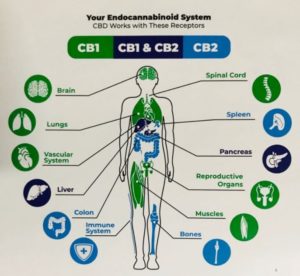 In the most basic sense, cannabinoids are the chemical compounds in weed which match up with the chemical compounds in your body and cause weed to affect you. Cannabinoids are the reason you get high when you smoke weed and they’re also the reason weed can help to heal certain illnesses and afflictions.
In the most basic sense, cannabinoids are the chemical compounds in weed which match up with the chemical compounds in your body and cause weed to affect you. Cannabinoids are the reason you get high when you smoke weed and they’re also the reason weed can help to heal certain illnesses and afflictions.
There are at least 113 cannabinoids found in weed and they all have a slightly different effect. Certain cannabinoids, like THC (Tetrahydrocannabinol), have a psychoactive effect, which is what makes you feel high. Other cannabinoids, like CBD, have more of a somatic effect, affecting the physical functions of your body.
Our bodies contain many receptors. The chief among these are named CB1 and CB2 and were discovered in the mid 1990’s. The CB1 receptor is expressed mainly in the brain, but also in the lungs, liver and kidneys. The CB2 receptor lives in the immune system and in cells which have to do with the formation of new blood cells.
How Do Cannabinoids Work?
Cannabinoids occur naturally in weed in the form of phytocannabinoids. They also occur naturally in the human body in the form of endocannabinoids. The ones found in the human body are produced in something called the endocannabinoid system, which is responsible for functions like sleep, movement, appetite and emotion.
Brain functions controlled by CB1-modulated neurotransmitters are diverse and of utmost significance as they include how we think, remember, learn new things, express emotions. They also affect bodily movement, fear, stress, pain, appetite and body temperature, among other critical functions.
CB2, is mainly found in the immune system. Once the cannabanoids enter your body, they attach to these receptors, activating the endocannabinoid system and affecting it in different ways depending on the particular cannabinoid.
How Many Cannabinoids Are There?
There are close to 150 other cannabinoids in each and every cannabis plant, most of them still mysterious and full of potential.
Here are some of the Cannabinoids which have been identified to date:
- Tetrahydrocannabinolic Acid (THCA)
- Tetrahydrocannabinol (THC)
- Cannabidolic Acid (CBDA)
- Cannabidiol (CBD)
- Cannabinol (CBN)
- Cannabigerol (CBG)
- Cannabichromene (CBC)
- Tetrahydrocannabivarin (THCV)
How Much Cannabinoid Research is Occurring?
“New” cannabinoids—chemical compounds that mimic compounds found in the human endocannabinoid system—like CBG (cannabigerol), CBN (cannabinol) and THCP (tetrahydrocannabiphorol) aren’t really new. Heck, they’ve been important cogs in the marijuana machine from first sprout. Until recently, though, they’ve remained under the radar of the mainstream.
There are reasons why very few of cannabis’ almost 150 phytocannabinoids have been isolated and comprehensively studied. Because marijuana is still deemed illegal on a federal level in the U.S., research–and securing funding for that research–can be a tricky endeavor. And because most varieties of cannabis are CBD- or THC-dominant, the isolation and study of “minor” cannabinoids can be challenging.
Cannabinoids, Now What?
Check out these other Blog Post which discuss the chemistry of Cannabis: Terpenes, What the Heck are Terpenes? Trichomes, What the Heck are Trichomes? and Flavinoids, What the Heck are Flavinoids.?
Book a Happy Travelers Tour Cannabis Experience and get up-close-and-personal with Cannabis Plants!
My Cannabis Hyperemesis Syndrome Story
My cannabis hyperemesis syndrome (CHS) story goes back 20 years and it’s taken me a long time to learn how to manage it. Before we get to it, we need to discuss CHS.
What is Cannabis Hyperemesis Syndrome
 Cannabinoid hyperemesis syndrome is characterized by recurring episodes of intractable nausea, abdominal pain, and vomiting in long-term cannabis users. Onset of the syndrome occurs after several years of chronic cannabis use and occurs more frequently in males. Each episode of hyperemesis typically lasts 24-48 hours.
Cannabinoid hyperemesis syndrome is characterized by recurring episodes of intractable nausea, abdominal pain, and vomiting in long-term cannabis users. Onset of the syndrome occurs after several years of chronic cannabis use and occurs more frequently in males. Each episode of hyperemesis typically lasts 24-48 hours.
A patient history of chronic use of marijuana and compulsive hot showers to alleviate symptoms of hyperemesis suggests cannabinoid hyperemesis syndrome.
Let’s Unpack CHS
It’s clear there are many people (both women and men) who, after consuming cannabis for a long period of time (typically many years of Chronic or Daily use) develop a bio-physical response (which includes: nausea, sweating and vomiting) after consuming cannabis.
Further, one way which CHS sufferers manage their symptoms is by taking hot showers. In some cases the hot shower counters hyperthermia symptoms and in some cases (like mine) the hot shower calms the stomach and stops the nausea and vomiting.
How Come CHS Occurs
This is the big mystery and the question which has yet to be answered. The metrics tell us that CHS occurs more frequently in:
• Men
• Chronic Consumers
• Under the age of 50
There are three ‘working’ theories about Cannabis Hyperemesis Syndrome documented in Wikipedia:
| CHS Theory | Details |
|---|---|
| Cannabinoid buildup theory | Tetrahydrocannabinol (THC) is a fat-soluble cannabinoid that can be deposited into a person's fat stores, accounting for the long elimination half-life of THC. During periods of stress or food deprivation, a person's fat stores can be mobilized (lipolysis) for energy consumption, releasing the previously stored THC back into the blood. The mechanism can be characterized as a "reintoxication effect." Another cannabinoid called cannabigerol acts as an antagonist at cannabinoid 1 (CB1) and serotonin 1A receptors, antagonizing the anti-emetic effects of cannabidiol that occurs through its effects on serotonin. |
| Hypothalamic theory | Cannabidiol, a cannabinoid found in cannabis, can increase the expression of the CB1 receptors in the hypothalamus of the brain. Additionally, THC acts at the CB1 receptors to induce a hypothermic effect, lowering body temperature. This might explain how exposure to hot water can relieve symptoms of CHS, reversing the decrease in the thermoregulatory set point induced by cannabinoids. |
| TRPV1 theory | Alterations in the transient receptor potential vanilloid subtype 1 (TRPV1) receptor, which is involved in gastric motility and is activated by cannabinoids, nociceptive heat (temperatures above 43°C), and capsaicin, has been proposed as potential mechanism of CHS. In vitro cannabinoids mediate dephosphorylation of TRPV1 and desensitize the receptor. The TRPV1 theory posits that chronic exposure to cannabinoids down regulates TRPV1 signaling, and that compulsive hot-water bathing is a learned behavior to normalize diminished TRPV1 activity by exposure to nociceptive heat. This may also explain the salubrious effects of topical capsaicin in treating CHS. |
My Cannabis Hyperemesis Story
In 1993 I was in a bicycle accident the result of which is a spinal cord injury. The accident crushed 12 vertebra in various areas of my spine. When I left the hospital I was given a prescription for the “opiate of the day” and sent home.
Fortunately I was familiar with cannabis and instead of taking the opiates I began using Cannabis to manage pain. Over the past 27 years I’ve consumed between 1.5 and 3.0 grams of cannabis per day to manage my ongoing, chronic pain.
Starting about 20 years ago, I would on occasion, be sick in the morning with some vomiting. I didn’t think much about it because I had been diagnosed with “extra large turbinates” (mucus producers in our nose) and, typically, what I did get “up” in the morning was mucus.
Starting 10 years ago, my wife and I realized I had a food allergy to nightshades. The discovery was accidental, however, once we made the connection between certain food and my “CHS” symptoms, we started to eliminate those foods, and, over time, the frequency and severity of my symptoms diminished.
In 2016 things changed. I woke up one morning and had a bout of CHS but NOTHING would stop the vomiting. Not a Shower. Not Ginger Tea. Not Cannabis. Finally, around 2 in the afternoon, I was lying on the floor in the fetal position suffering dry heaves and we decided to go to the emergency room.
It was during this process that the attending physician and I talked about my history and he determined I was indeed experiencing Cannabis Hyperemesis Syndrome. After treating me with Benadryl and Compazine, and after a two hour long nap, I was released.
Since then, every night before bed I take a dose of Children’s Benadryl (to mitigate mucus production while I sleep) and, IF I experience nausea in the morning I just take a HOT shower and my nausea discomfort stops!
Common Situation?
Is my CHS story the common situation? I’m not really sure. Some folks are so affected by CHS they stop consuming cannabis altogether.
For me, that’s not really an option. I still have serious chronic pain management challenges and, for me at least, cannabis continues to be the best way for me to manage it and maintain my ability to work, be an active member of my family and enjoy life.
Epilog and Update
In January of 2021 we made the decision to eliminate dairy and milk products from our diet. Since we did this, I haven't had a bout of CHS at all. This leads me to believe my "CHS" was, in reality, an allergy to dairy (specifically milk). I have to say I'm relieved and continue to use medical cannabis to manage my pain. Onward!
What to do Next
Read our blog post: What is Cannabis Hyperemesis Syndrome or Book an Educational Cannabis Tour with Happy Travelers Tours.
History of the Afternoon and High Tea
The history of the afternoon and high tea goes back to 1840. In modern times, you will see hotels serving a 'high tea'. Traditionally, the upper classes would serve a 'low' or 'afternoon' tea around four o'clock, just before the fashionable promenade in Hyde Park. The middle and lower classes would have a more substantial 'high' tea later in the day, at five or six o'clock, in place of a late dinner. The names derive from the height of the tables on which the meals are served, high tea being served at the dinner table.
 Afternoon tea was introduced in England by Anna, the seventh Duchess of Bedford, in the year 1840. The Duchess would become hungry around four o’clock in the afternoon. The evening meal in her household was served fashionably late at eight o’clock, thus leaving a long period of time between lunch and dinner. The Duchess asked that a tray of tea, bread and butter and cake be brought to her room during the late afternoon. This became a habit of hers and she began inviting friends to join her. The Duchess continued it when she returned to London, sending cards to her friends asking them to join her for "tea and a walking the fields."
Afternoon tea was introduced in England by Anna, the seventh Duchess of Bedford, in the year 1840. The Duchess would become hungry around four o’clock in the afternoon. The evening meal in her household was served fashionably late at eight o’clock, thus leaving a long period of time between lunch and dinner. The Duchess asked that a tray of tea, bread and butter and cake be brought to her room during the late afternoon. This became a habit of hers and she began inviting friends to join her. The Duchess continued it when she returned to London, sending cards to her friends asking them to join her for "tea and a walking the fields."
The Duchess Influences London
This pause for tea became a fashionable social event. During the 1880’s upper-class and society women would change into long gowns, gloves and hats for their afternoon tea which was usually served in the drawing room between four and five o’clock.
Traditional afternoon tea consists of a selection of dainty sandwiches (including of course thinly sliced cucumber sandwiches), scones served with clotted cream and preserves. Cakes and pastries are also served. Tea grown in India or Ceylon is poured from silver tea pots into delicate bone china cups.
The Difference Between Afternoon and High Tea
Changing the phrase ‘afternoon tea’ to ‘high tea’ happens to differentiate between the afternoon tea that is traditionally served on low, comfortable, parlor chairs or relaxing in the garden and the worker’s after-work high tea that is served at the table and seated on high back dining chairs.
The Happy Travelers Tours ‘High’ Tea Experience
We are not shy about using the word ‘high’ in our High Tea Experience. The reason? We serve 3 types of CBD-infused Teas along side a three course CBD-infused (and non-infused) Treat Tower with Sandwiches, Scones and Breads and Desserts!
Perfect for Groups of Four or More! From Ladies Day Out to Bachelorette Parties, from Groups to Birthday Celebrations, our High Tea is the most unusual experience you’ll ever have!
Book your Seats today for the High Tea Experience!